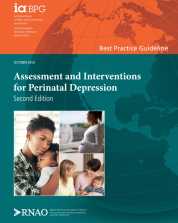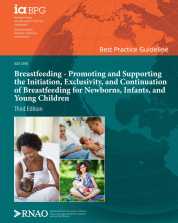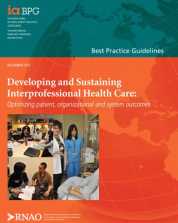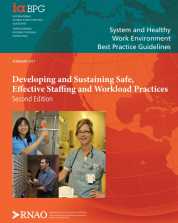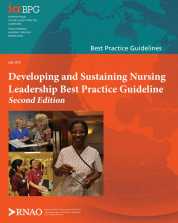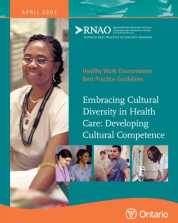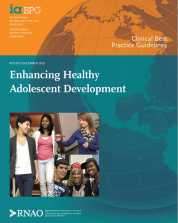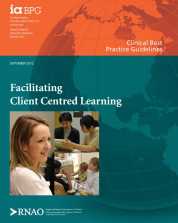The purpose of this best practice guideline (BPG) is to provide evidence-based individual, organization, education, and system/policy recommendations to: 1) enhance the capacity of all individuals involved in the implementation of an eHealth solution within a health care organization; 2) establish suitable infrastructures to support eHealth education needs; and, 3) facilitate technology-enabled health system transformation.
The purpose of this best practice guideline (BPG) is to present evidence-based recommendations for nurses and the interprofessional team across all care settings to enhance the quality of their practices to support the reduced incidence of perinatal depression through the implementation of five components of care: routine screening, assessment, prevention, coordinated interventions, and evaluation.
The purpose of this best practice guideline (BPG) is to enhance the capacity of nurses, the interprofessional team, peers, policy-makers, and employers to meet the needs of breastfeeding persons, their healthy term newborns, infants, and young children, and their partners, family, and support network.
The purpose of this best practice guideline (BPG) is to foster healthy work environments.
The purpose of this best practice guideline (BPG) is to inform staffing and workload recommendations that can be implemented to benefit patients, nurses and other health-care providers, and organizations, as well as research, education, health-care policy, and systems. The goal of this guideline is to assist nurses, nursing leaders, and senior management groups across practice domains and settings to create healthy work environments through safe, effective staffing and workload practices.
The purpose of this best practice guideline is intended to assist nurses and others performing both formal and informal nursing leadership roles from the point-of-care to the board room, across a variety of practice domains and settings.
The purpose of this best practice guideline (BPG) is to promote a healthy work environment for nurses by identifying best practices for embracing diversity within health care organizations.
The purpose of this best practice guideline (BPG) is to assist nurses working with youth in a variety of practice settings, i.e. schools, public health units, community health centres, adolescent clinics, hospitals, and in family practice. Recommendations are inclusive of adolescent development across diverse contexts (e.g. cultural, socioeconomic, structural, political.)
The aim of this best practice guideline (BPG) is to provide evidence-based recommendations for Registered Nurses, Registered Practical Nurses and other health-care providers to facilitate client-centred learning that promotes and enables clients to take action for their health.
